13" snow on the ground in the Twin Cities.
19" snow on the ground in Duluth.
27" snow on the ground at International Falls.
3305 heating degree days since December 1. That means we've spent roughly 3.5% more than average heating our homes and businesses since the beginning of "meteorological winter" on December 1.
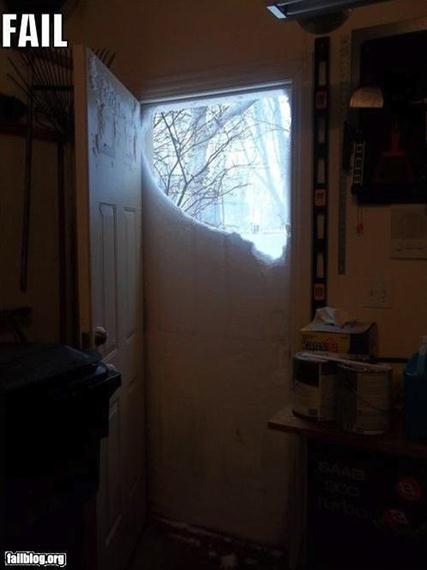
Friday Snowfall in Texas: (courtesy of EarthNetwork)
Dallas, TX - - Love Field - - has 5 inches of snow !
Dallas-Ft. Worth International airport - - has 3 inches of snow
Ft. Worth, TX (NWS WFO) - - has 3 inches of snow
Waco, TX - - has 2 inches of snow

5 Coldest Places On Earth. The Christian Science Monitor lists the top 5 (populated) cities. International Falls is #5? Somehow that doesn't seem quite right: "5. International Falls, Minnesota. Widely described as the coldest city in the continental United States, International Falls, Minn, sits on the Rainy River, just across from Fort Frances, Ontario. On Friday, the town set a new cold record for Jan. 21, hitting 46 degrees F below zero. The town has long promoted itself as the "Icebox of the Nation," but the trademark for this slogan has been repeatedly challenged by the town of Fraser, Colo. In 1986, International Falls paid Fraser to relinquish its claim, and then registered it as a federal trademark. Ten years later, the town forgot to renew the trademark, and Fraser tried to snap it up. A 12-year legal battle ensued, with International Falls prevailing in the end. Needless to say, relations between the two towns remain chilly."
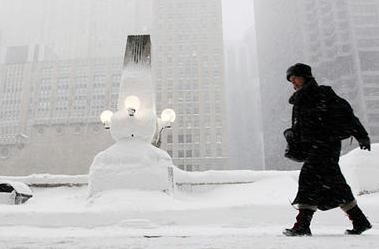
Winter Storm Raises The Question: What's Going On With The Weather? The recent spat of major storms from Chicago to New York, Boston (and now Dallas) has a lot of people scratching their heads, attempting to connect the dots. The Christian Science Monitor tackles the subject: "Scientists caution that it is far too early to speculate on whether these climate patterns are part of a new normal for North American winters. Over the long term, none of the storms this winter or last are unprecedented, notes Deke Arndt, who heads the climate monitoring branch at the federal government’s National Climatic Data Center (NCDC) in Asheville, N.C. But they raise questions, and scientists are looking a wide range of data – from summer sea-ice levels in the Arctic to rainfall over the Indian Ocean – to better understand the global mechanics behind when and how these climate patterns shift. To be sure, the past two winters “have not been like the slew of winters we’ve seen over the past couple of decades,” says Mr. Arndt."


Tallying The Costs Of A Wicked Storm. More from the NY Times here.

Another Wild Week. The meteorological analysts over at Planalytics are predicting another active week, a series of major storms pounding the south and east with ice, snow, even a severe storm outbreak for Texas. Blizzard conditions are possible across New England by next Thursday.

Sunday Slipping And Sliding? The GFS models have been much more aggressive with Sunday's predicted snow, over 3", while the (usually more accurate/reliable) NAM models have been in the 1--2" range. With an expected air temperature close to 30 many roads may be slushy/wet, but there could still be some travel glitches, especially after dark Sunday evening.

A Reason To Keep On Going. The GFS model continues to pull milder, Pacific air into Minnesota the third week of February, maybe 4-5 days in a row above 32 F? No more 40s showing up - we'll see, but stating the obvious: we're due.
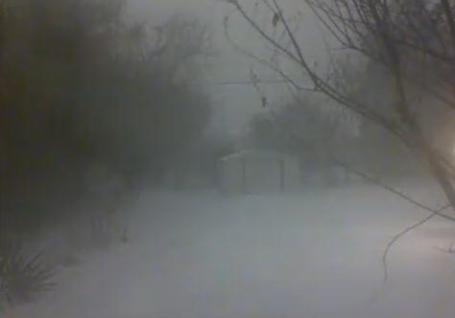
Tulsa Timelapse. The Blizzard of '11, condensed into 3:00 in this YouTube clip.
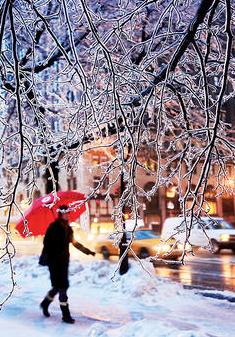
Is The Worst Of Winter Behind Us? No question: next week will be cold, maybe one of the 3 coldest weeks of winter. But based on the duration of subzero weather I still suspect the "worst of winter" may be behind us now. Maybe that's wishful thinking, but Professor Mark Seeley seems to agree. Here's an excerpt of his most recent WeatherTalk blog: "Yes, I think the coldest temperatures of the season are behind us now, no more -30 F readings. But, I see a continuation of a colder than normal temperature pattern well into the month of February. Perhaps by the end of the month we will see a string of warmer than normal days materialize and bring widespread thawing."

Chicago Snow Season On The Verge Of Making History - More Snow On The Way? Andre Evbuoma has an interesting (Examiner) article about the snow season in Chicago - how they are on track for an historic season: "The 2010-2011 snow season is on the verge of setting weather history after the Blizzard of 2011 dumped over 20 inches of snow over the Chicago area. Dating back to the 1884-1885 snow season, there have been 25 snow seasons that have produced 50 inches or more of snow, but there has never been more than 3 seasons in a row to produce 50 or more inches of snow. With just an additional 2.5" of snow, the 2010-2011 will make it 4 seasons in a row to have 50 or more inches of snow. Since 1884-1885, there has been only two occurrences where 3 concsecutive seasons produced 50 or more inches of snow:
- 1976-1977: 54.1"
- 1977-1978: 82.3"
- 1978-1979: 89.7"

* Another report from the Fox affiliate in El Paso is here.
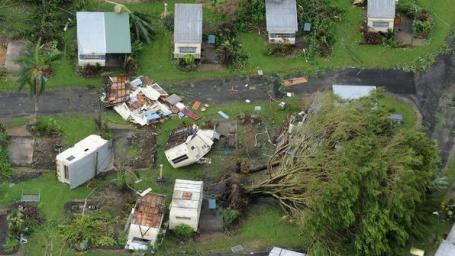
Australia Picking Up The Pieces After Cyclone Yasi. An update from the New York Times: "SYDNEY, Australia — One of the most powerful cyclones ever to strike Australia ripped dozens of houses from their foundations, uprooted trees and shredded millions of dollars worth of sugar and banana crops when it slammed into Queensland’s northeastern coast in the predawn hours on Thursday. With winds howling at up to 185 miles per hour, Tropical Cyclone Yasi ripped through a number of coastal and farming villages between the popular tourist cities of Cairns and Townsville, which were largely spared any major damage. Residents told local news outlets of huddling in their bathrooms while the ferocious winds pried the corrugated roofs from their houses. Aerial photos from the cyclone’s strike zone showed several houses with their rooms laid bare like dollhouses. Other residents said they found shelter where they could to wait out the storm."
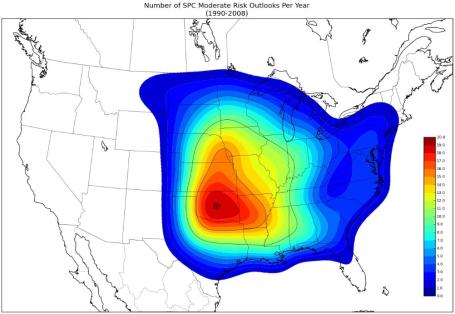
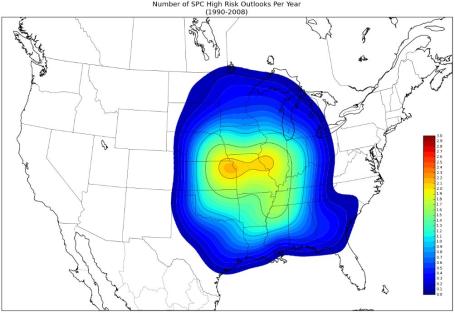
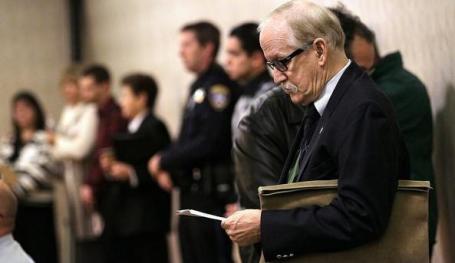

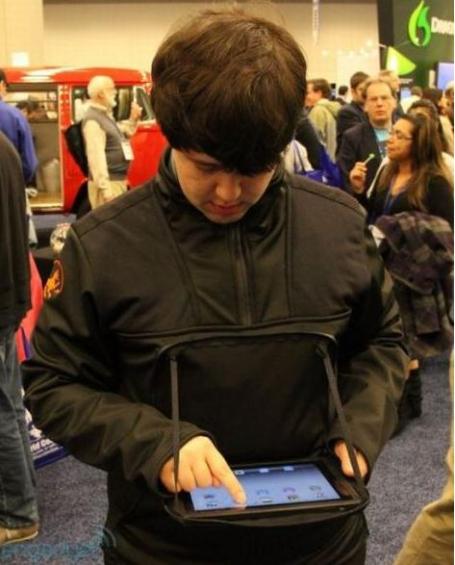

Paul's Conservation Minnesota Outlook for the Twin Cities and all of Minnesota:
TODAY: Mosty cloudy, better travel day of the weekend. Winds: SE 3-8. High: 32
SATURDAY NIGHT: Mostly cloudy. Low: 23
SUNDAY: 1-3" snow possible, icy/slushy roads. High: near 30
MONDAY: Flurries taper, windy and much colder. Low: -1. High: 6
TUESDAY: Peeks of sun, still bitter. Low: -10. High: 5
WEDNESDAY: More clouds, passing flakes. Low: -5. High: 10
THURSDAY: Reinforcing cold front, nippy. Low: -6. High: 5
FRIDAY: Clouds increase. Yes, this is getting old. Low: -5. High: 8

Piles Of Snow At The WeatherNation Parking Lot. There's something to be said for commuting to work by snowmobile.
Vehicular Anarchy
It's been a challenging winter for travel, by air on on land. The other day I came close to getting smacked, just pulling out of my driveway. The problem? Towering 8 foot piles of snow made it impossible to see oncoming traffic. We're all flying blind these days. Snow-blind.
Have you noticed parking lots have HALF as many spaces as usual? The mountains of dirty snow have to go somewhere. That can lead to skirmishes for rare and coveted parking spots. Its come to this. Yes, we will earn our spring this year, more than any year in the last decade.
Next week: one of the 3 coldest weeks of winter; 5 subzero nights, single-digit highs in spite of a bright (mocking) sun. But there is some good news. No mega-snows in sight, nothing that will complicate your commute anytime soon. And by the third week of February we may see a real thaw, maybe 3-4 days in a row > 32 F. One model is even hinting at 40 F. by Feb. 18. Kind of sad that it's come to this.
The approach of bitter air will set off 1-3+" snow Sunday, maybe enough to shovel/plow and freshen things up in your yard.
Go slow - watch for cars, pets and kids. And the next time you duel for a parking spot? "Minnesota Nice."
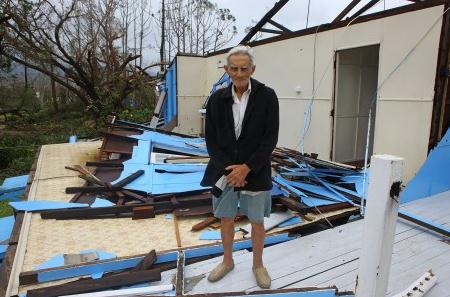
Australia's Cyclone: Climate Change Or Just Really Bad Weather? A closer look at what (if anything) all these extreme weather events really mean from Time Magazine: "The cyclone that thrashed a still-soggy Queensland yesterday has re-energized an ongoing debate Down Under over what Australia can expect from a warmer planet and what the nation – the world's largest emitter of carbon dioxide per capita – should do about it. Front and center in the fray is Ross Garnaut, the government's climate change adviser who released the first of several updates to his 2008 report on fighting global warming yesterday. “If we are seeing an intensification of extreme weather events now, you ain't see nothing yet," he said in a speech the day after the category 5 storm landed in northeast Queensland, killing one man and doing hundreds of millions of dollars in damage to the region's buildings and the agricultural sector."
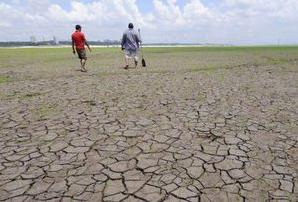

Home Go Ultra-Green. A story from the Sacramento Bee: "A Sacramento developer said it plans to roll out a new, ultra-efficient housing development in midtown this fall where energy bills will be as much as 70 percent lower than normal. The 34 houses planned for 25th and R streets will be net-zero energy – meaning they produce more energy than they use. Such houses are usually sold at the high end of the residential market. Developer Pacific Housing Inc. said the single-family homes will be priced around $300,000, which it believes is within the affordable range of median family incomes in the area."We feel this is one of the first of this kind of project in the Western region," said Mark Wiese, Pacific Housing's president."
No comments:
Post a Comment